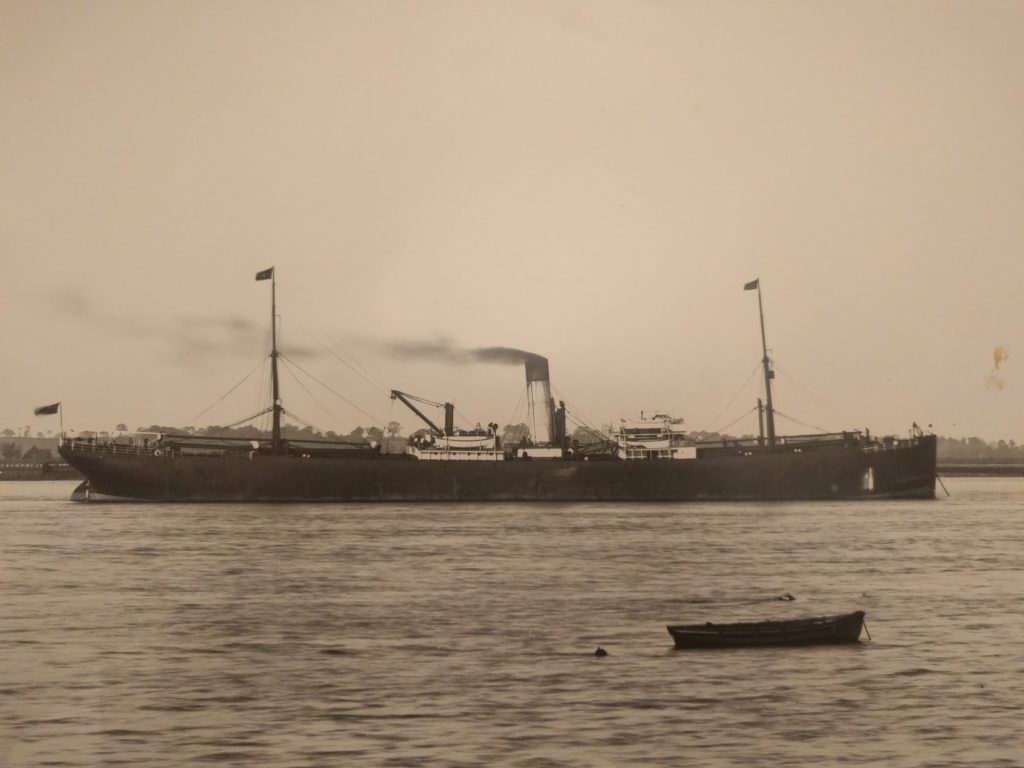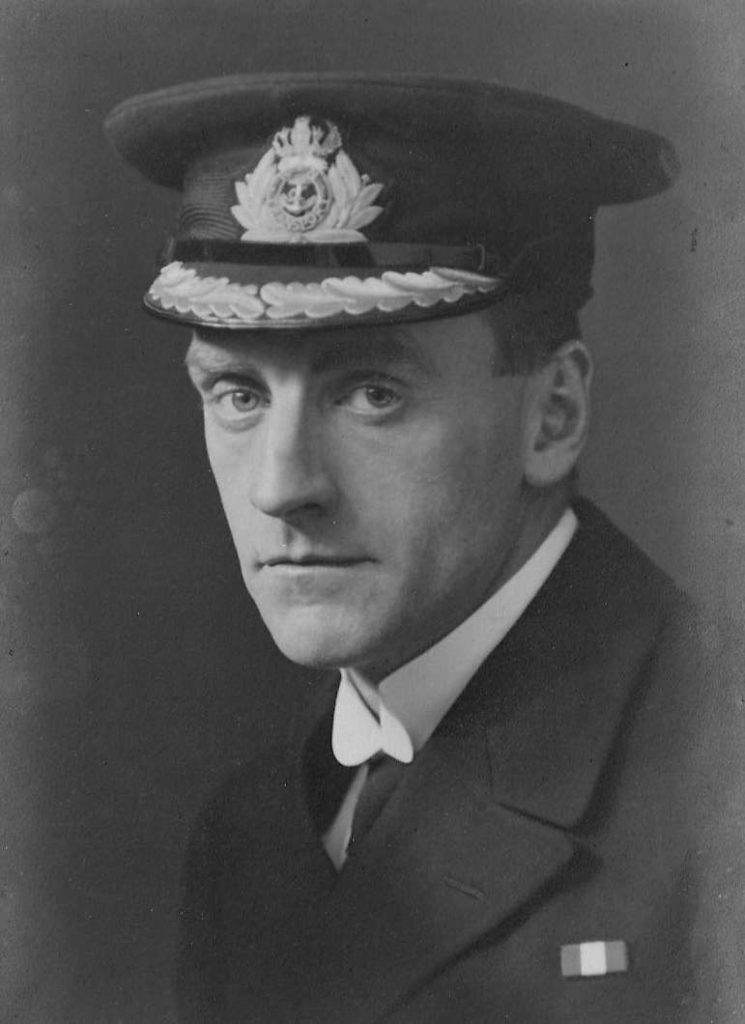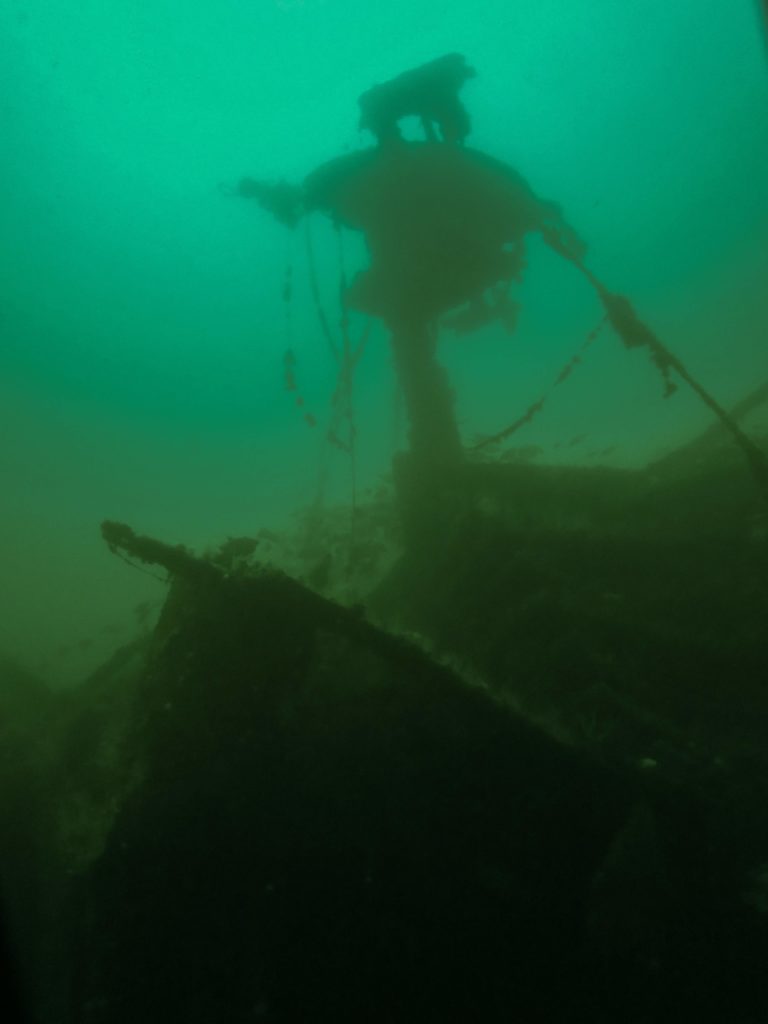East Point – 50:07:666 N – 04:00:461 W

The East Point was a cargo ship that was built in 1901 by JL Thompson at the Sunderland yards. The vessel was powered by a triple expansion engine and had 3 boilers. Tonnage of 5234 and nearly 120m long. A big ship. As WW1 developed she became a defensively armed ship.
On 9th March 1917 she was heading for Philadelphia from London when she was attacked by a German submarine (U-48) and subsequently sunk some 9 miles south eastwards from the Eddystone lighthouse.
However, although the vessel was fatally torpedoed she didn’t sink straight away but continued on moving through the water. Meanwhile U-48 ascended to periscope depth intent on more attacks. But the sub was right in the path of East Point. A collision was inevitable, the conning tower of the sub was damaged and 2 men died. The sub quickly descended to the seabed at about 70m, effected repairs and then ascended. Owing to the damaged conning tower the sub had to continue back to Wilhelmshaven on the surface for 6 days. U-48 went back home the long way around (ie. around Ireland and the North Sea). Being a determined sub she still sunk an extra sailing vessel on the way back.
The U-48 was 65m long and weighed in at 725 tons. She was built in Kiel in 1916. A crew of 36 and a maximum rated depth at 50m. The vessel had 4 torpedo tubes, 6 torpedoes and a 88mm deck gun. In March 1917 she took down 6 vessels with 6 torpedoes (the East Point was the last). She took a 7th ship down off the west coast of Scotland with her surface gun.

The U-48 was sunk off the Goodwin Sands on Nov 24th 1917. She got fouled up on the sand bank and was then pummelled by a number of English drifters and warships.
Meanwhile the East Point had sunk. All 45 crew survived and were transported to Plymouth.
Here’s a description:
http://www.maritimequest.com/daily_event_archive/2014/03_mar/09_east_point_u48.htm
But the history of the East Point before the torpedo attack is interesting. The master of the vessel was Harold Young who got the DSC medal for his rescue work in Gallipoli in 1915. They were shelled while unloading troops – Kephalo -> Suvla Bay. The cargo was hay. A shell set hold 1 alight and then another shell compounded the work. 15 hours of fire followed. It took 3 days to refloat the ship. The vessel was clearly seriously damaged but she managed to sail to Philadelphia and was repaired there.
Harold Young was born in 1880 and learnt his trade on sailing ships. He was captain of the East Point from 1909 to 1917. He was torpedoed on SS Rapallo which sunk in Jan 1918. He retired in 1940 and died in 1967. An active life.

For today’s divers the wreck lies upright from about 68m seabed. The East Point is an impressive wreck. Although the bow section is well broken up, midships is reasonably complete but the stern is still good and stands proud of the seabed at 52m. The bows lie SW at 213 degrees. Slack water is the usual 3 hrs before and 3 hrs after HW at Plymouth.
